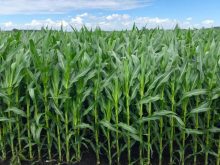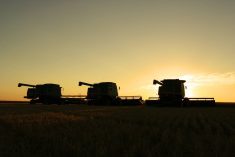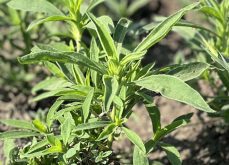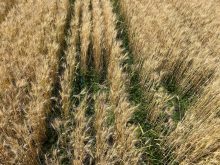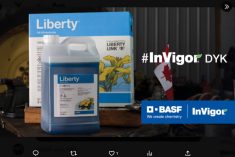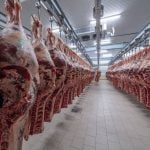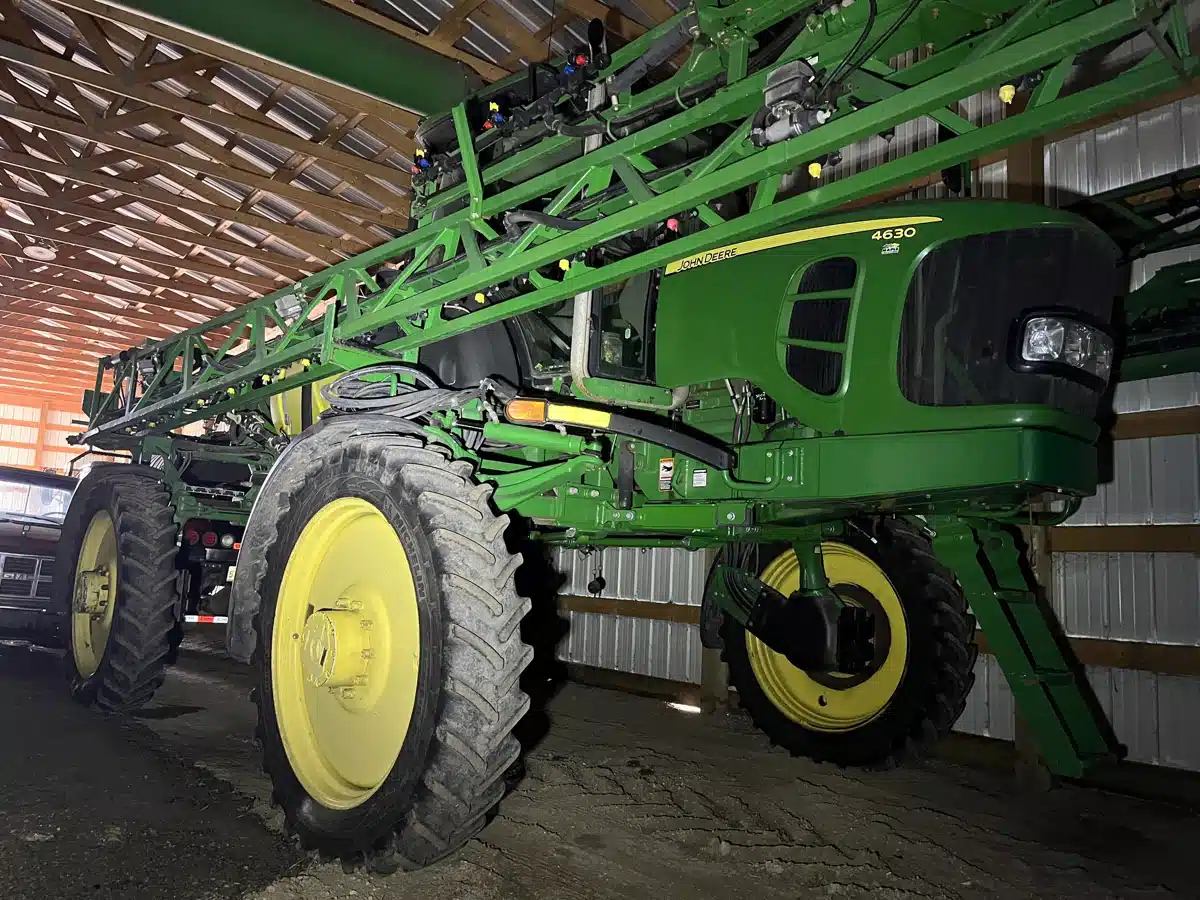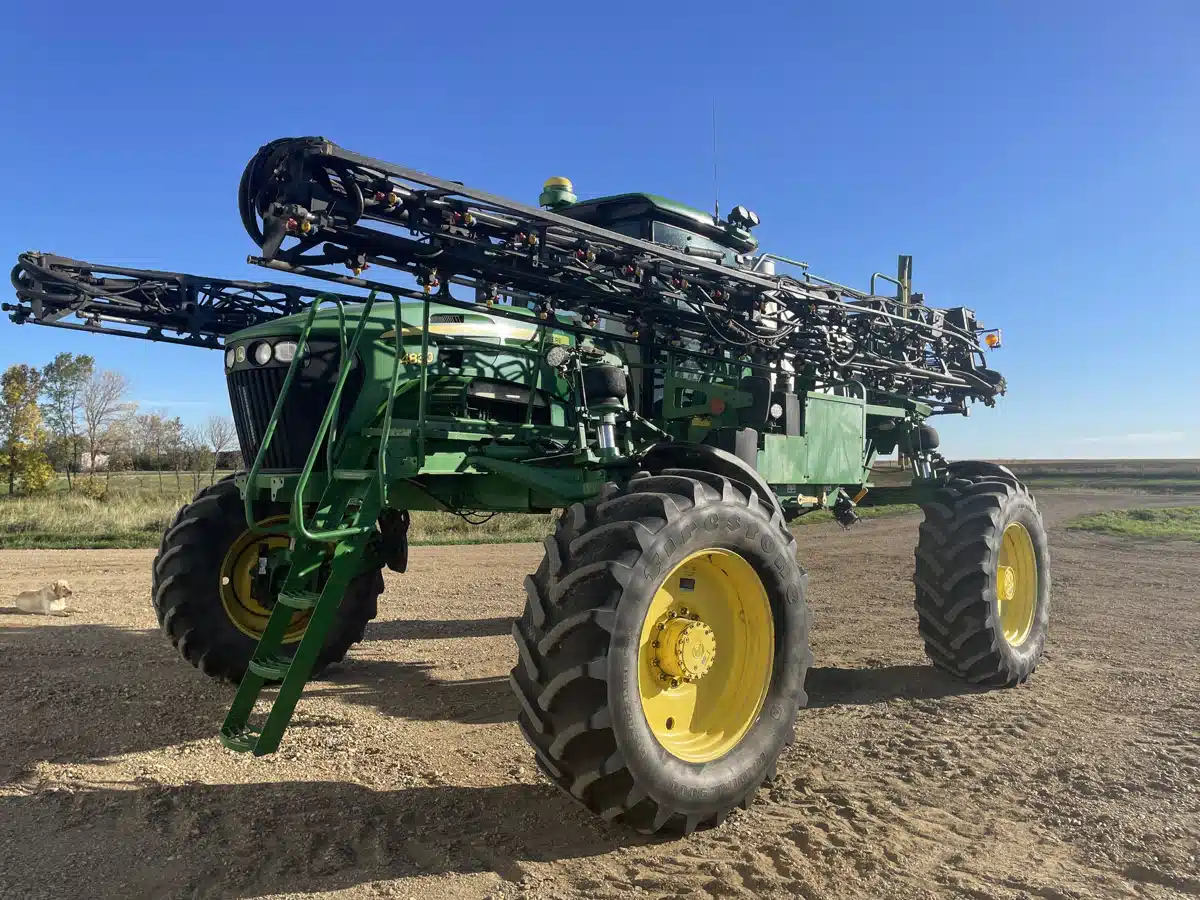Iowa State University in late August published the results of its field-scale trials of John Deere’s precision spraying system See and Spray Ultimate, and the outcomes were impressive, to say the least.
Deere’s system uses artificial intelligence and machine-based learning to identify weeds in a growing crop and make targeted applications.
The Iowa trials consisted of five fields, totalling 415 acres, and the herbicide reduction in each over the course of the 2024 growing season ranged from a high of 87.2 per cent to 43.9. Actual application rates were dependent on weed pressure variations in the fields, saving on average over US$15 per acre. That would amount to a lot in a broad-acre farming operation.
Read Also

Claas brings 1000 Series SP forage harvesters to Canada
In mid-August, Claas unveiled its new line of Jaguar forage harvesters at an event in Visalia, California, deep in the heart of that state’s dairy region.
The university summed up the overall results this way:
“Effective weed management using precision spray technology was demonstrated at field scale and had an average product savings of 76 per cent. Initial weed pressure determined individual field savings with the highest precision spraying technology performance when weed pressures were low at the time of the second herbicide application. Overall, 4,700 gallons (17,791 litres) of tank mix and (US) $6,500 worth of herbicide product were saved across the 415 acres using the John Deere See and Spray Ultimate machine while maintaining clean fields through canopy formation.”
Not surprisingly, John Deere was quick to point to the results of this independent study in a press release, adding a summary of its own data collected during the 2024 growing season, which showed similar results.
See and Spray technologies are offered on a per-acre subscription basis, so it wouldn’t be too hard for Deere to track their use. This year Deere machines covered over one million acres with the system — and that data shows there was an overall herbicide saving of 59 per cent compared to conventional broad application.
Those Deere numbers come from the use of both See and Spray Ultimate and Premium, systems capable of spot spraying in season as well as on fallow fields.
“When we look at this technology compared to traditional broadcast application, we’re able to achieve all the similar marks for hit rate, for weed mortality, for just overall field cleanliness, but we’re able to do so at a fraction of the cost,” Deere product manager for application Josh Ladd says. “This year we saw nearly 8.3 million gallons of herbicide saved.”
Unfortunately, Deere’s green-on-green See and Spray technology is only available for use in corn, soybean and cotton crops at the moment, but brand executives have said Deere intends to widen that range of compatible crops significantly.
“We have a very lengthy list of crops they would love to see,” Ladd adds.
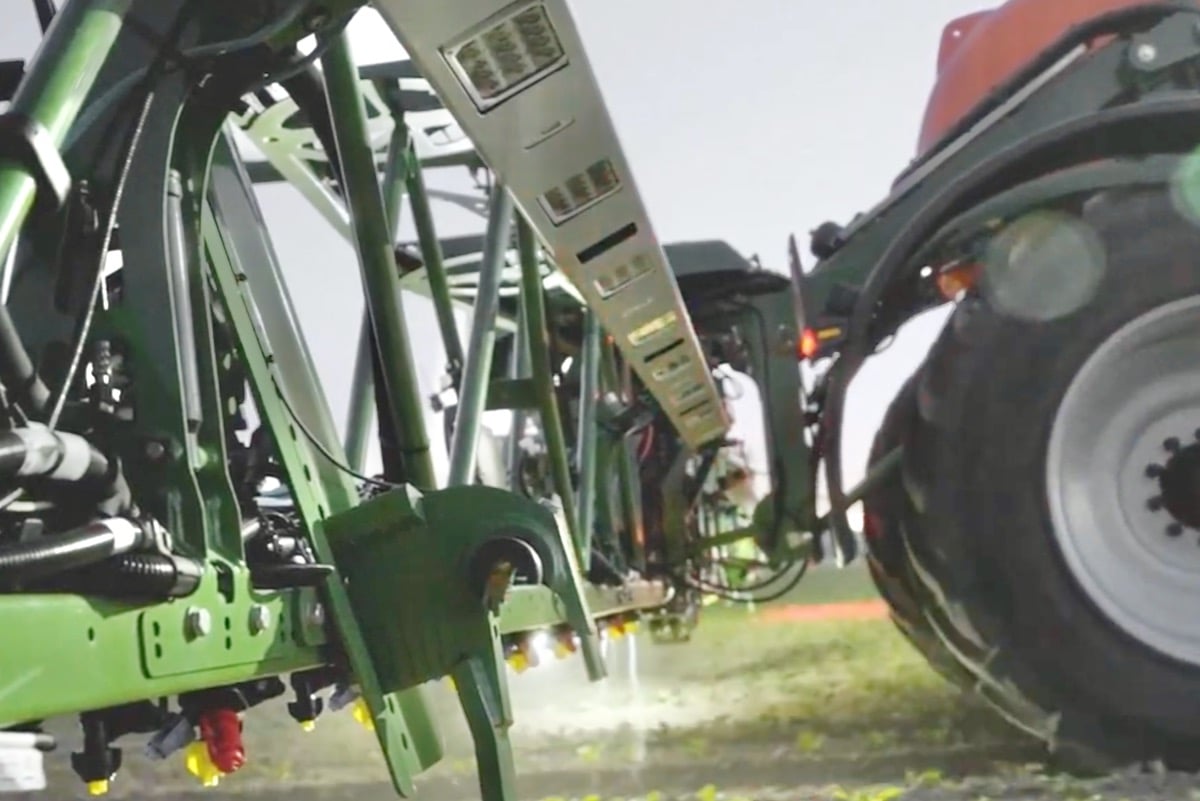
Green-on-green
Connected to a See and Spray system, “as a sprayer passes through a field up to 15 m.p.h., we’re scanning approximately 2,500 square feet per second,” Ladd says.
“As we’re encountering various pests, whether it’s a weed or volunteer crop of another type we’re sending signals to the appropriate ExactApply nozzle body to apply the specific dose only when and where it’s needed in the field.”
In its release detailing the 2024 summary, Deere included comments from some U.S. growers who used See and Spray Ultimate this season on their own farms. One grower, Bill Came from Salina, Kansas, had this to say.
“We’re spraying less chemical, it’s saving us money, and it’s better for the environment. We ran through our herbicide costs we were going to have and dropped them by two thirds. That is going to make our sprayer payment.”
Other systems besides Deere’s are emerging in the market for green-on-green precision spraying capability, including One Smart Spray, a joint Bosch and BASF venture, and another from an Israel-based startup called Greeneye Technology. Both are currently offered as retrofit systems.
In May, Greeneye announced the establishment of its first North American dealership, in Nebraska. The company is now in the early stages of establishing a dealership network across the U.S.
Greeneye offers a retrofit proprietary 120-foot boom equipped with its system, to add to current sprayers of any brand or model, giving them spot-spray capability.
In its press releases, Greeneye claims users have realized cost reductions of $25-$35 per acre.
The first calculation for growers considering using these systems is weighing the costs of acquiring and using the machine technology against its potential cost savings. But there may be another consideration.
Public opinion around the use of pesticides remains generally negative. A 2023 federal government survey found 62 per cent of Canadians did not think pesticides could be used safely even when used according to instructions.
That means we could eventually see even tighter rules around the use of pesticides in conventional agriculture. Using systems like See and Spray Ultimate may someday no longer be a choice.




